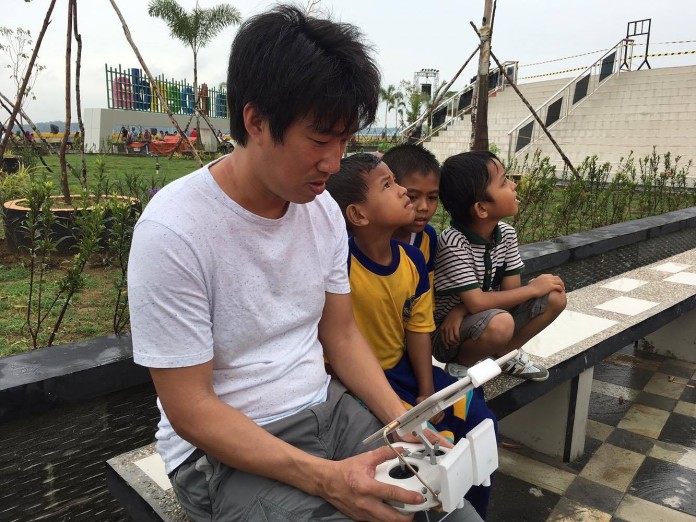SINGAPORE: As a national sailor, he represented his country in competitions overseas. Now Charles Lim has gone from racing sailboats to documenting them in action with his video camera.
For the past couple of years, the 43-year-old Singaporean artist has been regularly shooting videos of traditional Malay wooden sailboats, or kolek, as they race in the waters of Indonesia’s Riau Islands.
In the CNA Insider digital documentary Racing Time And Tide, you can see some of Lim’s stunning footage of these kolek – including a heart-stopping scene of a boat capsizing and a bird’s eye view of a race held in August at Belakang Padang, an island near Batam.
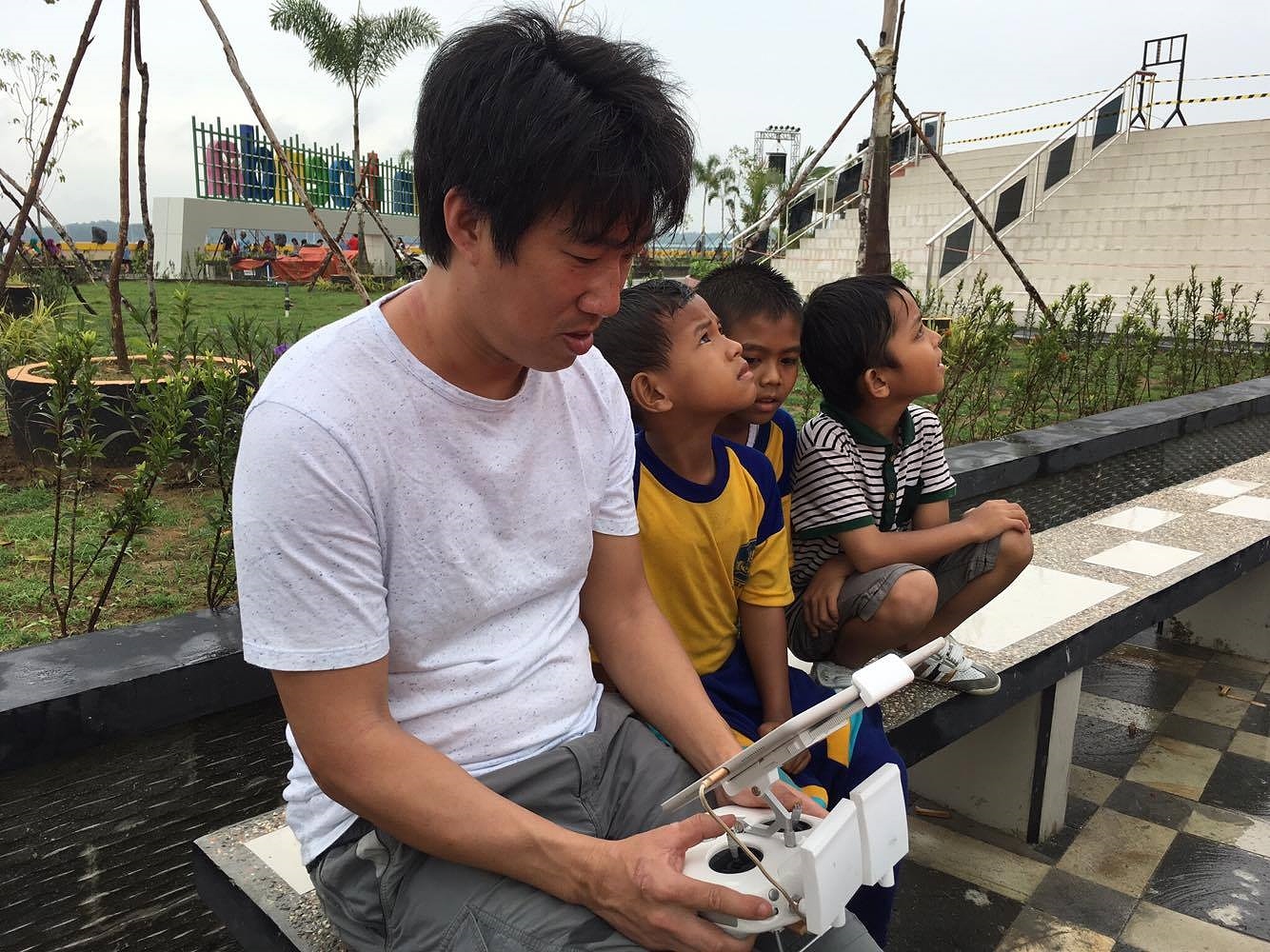
Singaporean artist Charles Lim testing his drone camera at a kolek race at Tanjung Pinang, Bintan. (Photo: Matthew Yang)
The footage is part of Lim’s ongoing art project called Stealing The Trapeze, which looks in part at the culture of boat racing that has disappeared from Singapore but is thriving again in the Riau Islands and Johor in Malaysia.
The full video of Stealing The Trapeze is currently up at the National University of Singapore Museum, as part of an exhibition titled “There are too many episodes of people coming here…”
Lim isn’t the only artist in the show that looks at the kolek. There is also a half-finished boat on display, and it belongs to fellow artist Dennis Tan who is trying to build one from scratch.
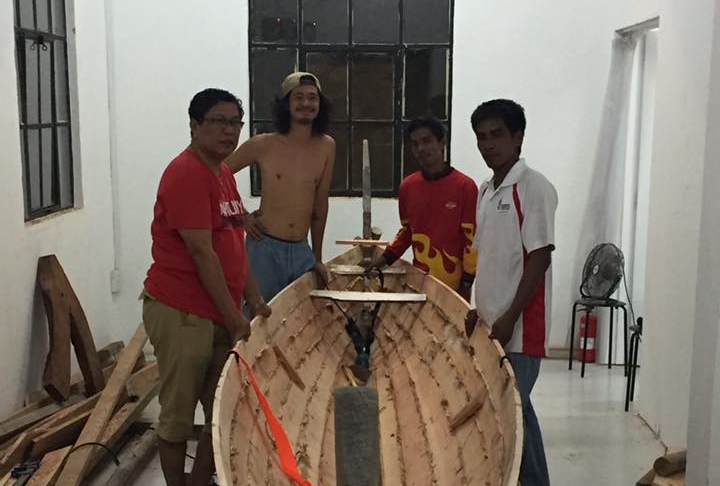
Artist Dennis Tan (second from left) with kolek enthusiast Mazlan Mohd Nasir (left) and the unfinished boat. (Photo: Dennis Tan)
The two artists share a fascination with the kolek, which was a familiar sight in Singapore back in the 1960s and 1970s. Races were often held in the Southern Islands and off the mainland’s coastline before the tradition slowly vanished due to land reclamation and development.
For Lim, it’s a passion that is strongly linked to his childhood growing up in the old kampong of Mata Ikan, where Changi Business Park now stands.
“(The village) used to be near the beach but by the time I was growing up, it was all land reclamation,” he recalled. His father, however, had told him that back in the day, kolek races were held there, and people would also build boats using trees found in the area.
Later on, Lim saw these kolek in action, albeit briefly. As a member of the under-15 national sailing team, he recalled catching a glimpse of these while training in the East Coast.
“I remember sailing close to them and being quite surprised at how fast they were. I didn’t have a good look because I was concentrating on my training, but I do remember thinking that the boats were quite narrow,” he said.
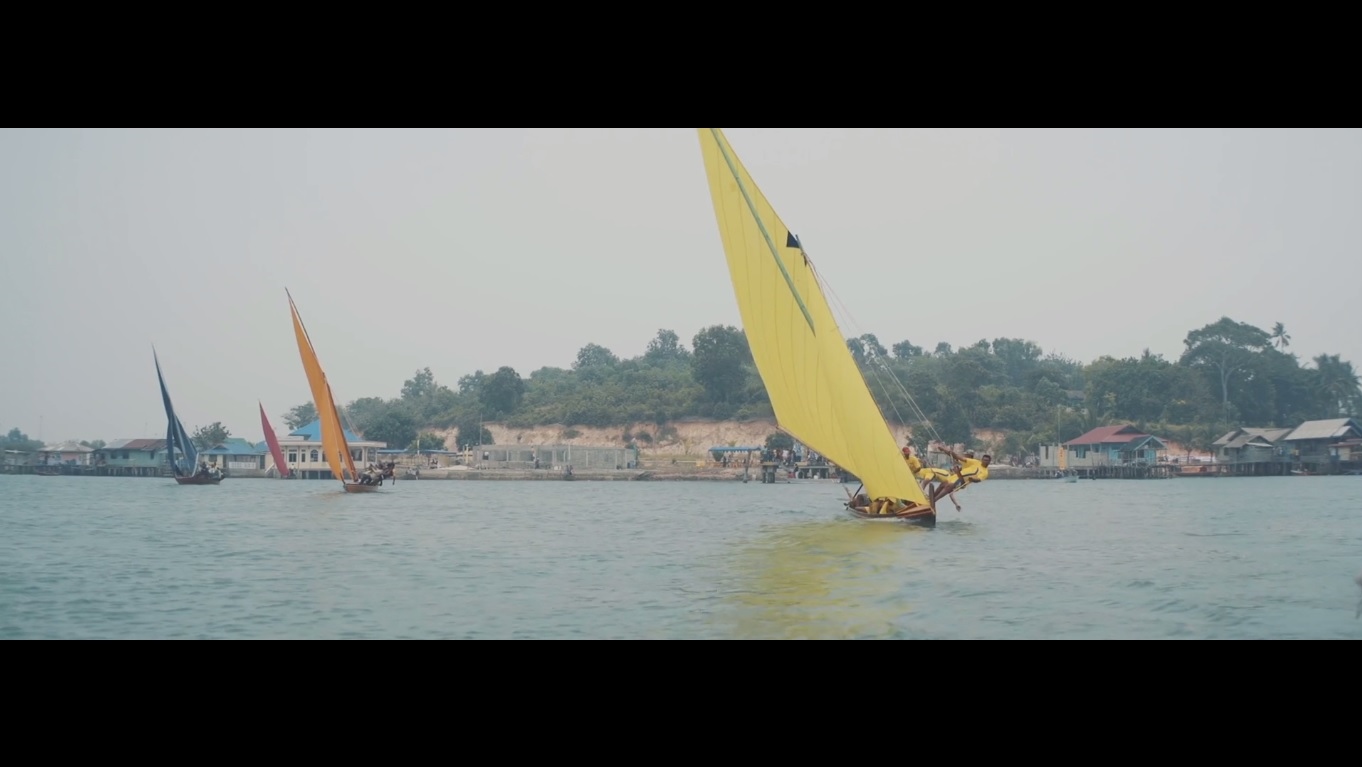
(Screengrab: Charles Lim)
Lim would later be part of Singapore’s national team and race in a couple of events, including the 1996 Olympics. But ironically, it wasn’t until he left sailing to pursue a career as an artist that he would come across these kolek once more.
As an artist, his works often revolve around Singapore’s relationship with the sea, as seen in his exhibition SEA STATE, which was shown at last year’s prestigious Venice Biennale, where he represented the country.
It was around this time that the world of the kolek opened up to him. While preparing for the biennale, he got to know Mazlan Mohd Nasir, a Singaporean who owned one and regularly took part in races held in the Riau Islands. (Read his story here.)
The first time Lim saw an actual kolek race, near Batam’s Sekupang pier, his jaw dropped.
“I was very surprised. I thought the races had died, and then you go there and there were a lot of boats. And a lot of people were watching the races from the harbour, and it didn’t feel like it was about preserving something, you know? It was very much ‘this is what we do and we can do anything with it’.”
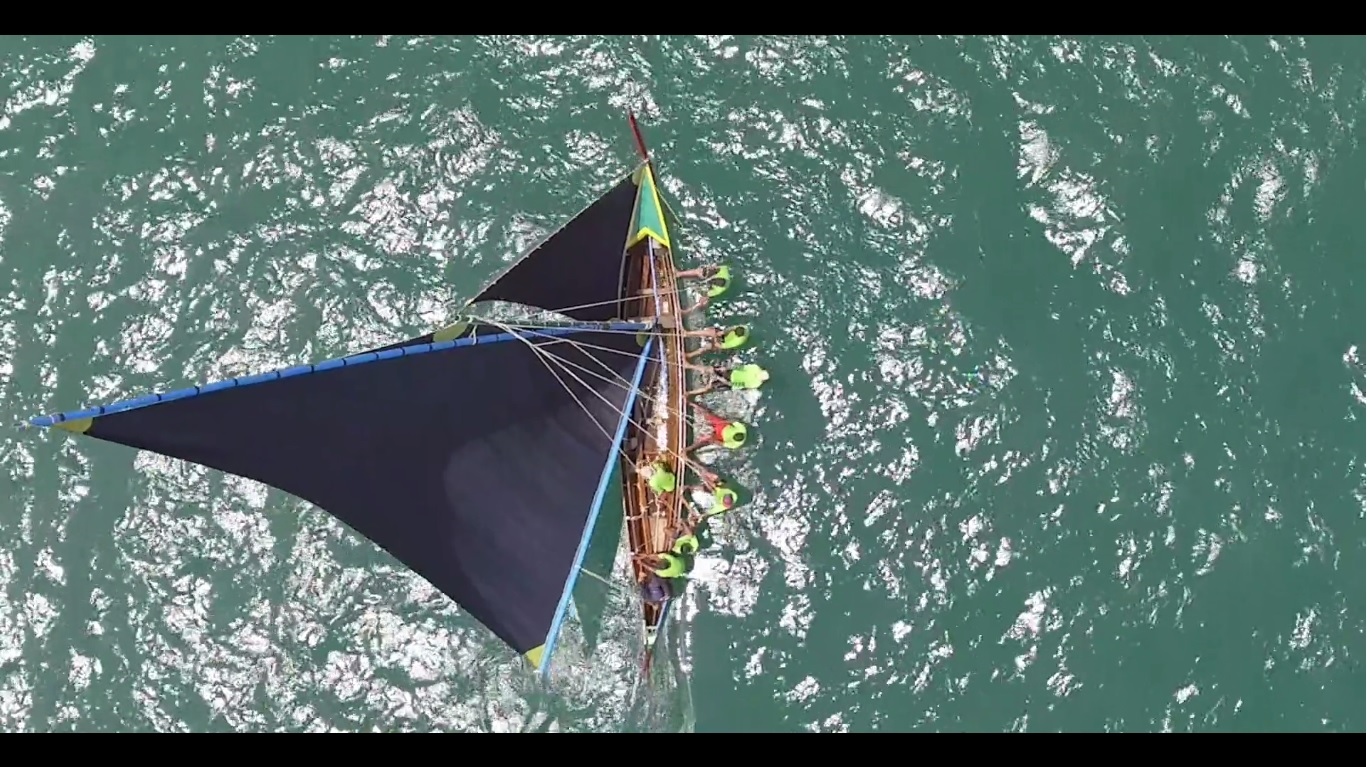
(Screengrab: Charles Lim)
He proceeded to shoot a video of the race – and continued to shoot videos every time he was able to tag along with Mazlan, who eventually invited Lim to his father’s village on the small island of Keban to watch a team practice.
Lim even tried sailing a kolek. “It’s hard, you need to be quite fit! It’s really nice, actually, but also a big scary. The boat is always at risk of sinking” he laughed.
His kolek adventures have led to the creation of a couple of artworks that have been exhibited in Ireland, Japan and Singapore.
BUILDING FROM SCRATCH
At the same time, Lim began introducing other people, who were also interested in kolek, to Mazlan.
One of these was Tan, who joined Lim in one of his visits to Keban. There, he came across a couple of these old boats.
“During my first time there, I saw two unseaworthy koleks on the side of the island’s pathways,” recalled the 41-year-old architecture-trained artist.
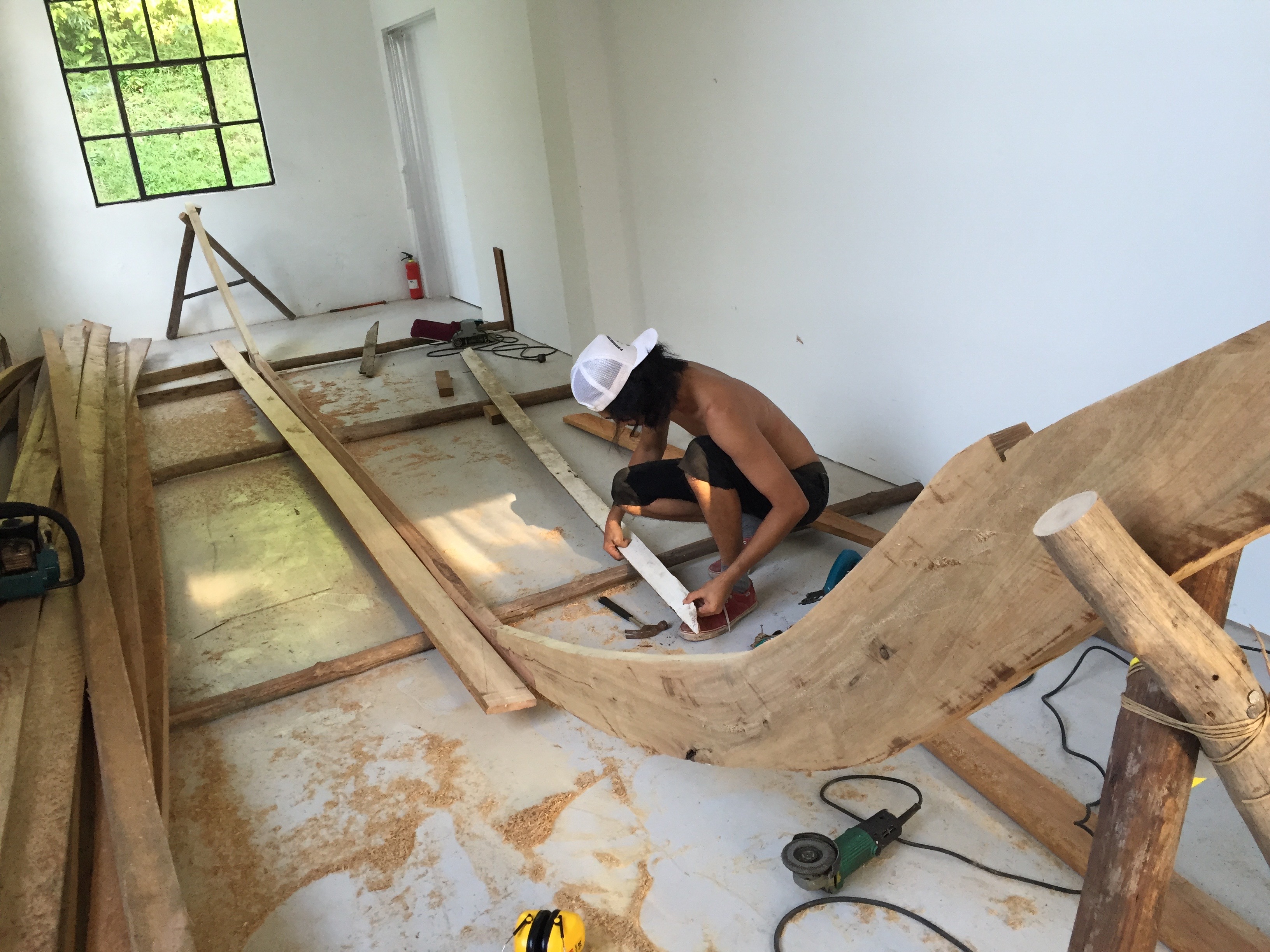
Dennis Tan hard at work on his kolek. (Photo: Dennis Tan)
Tan was so enamoured by the boats and the stories behind them (they were past winners of kolek races) that he later spent his weekends on the island, where he soaked in the stories his hosts, watched sea trials, and even tried to build an oar. At some point, the boats were bequeathed to him.
His experience there led to the idea of trying to build his own boat. Early this year, Tan received an artist residency under the NTU Centre for Contemporary Art Singapore. After the boats, as well as some raw timber, were shipped to Singapore from Keban, he spent four months at his temporary space at Gillman Barracks trying to make a kolek.
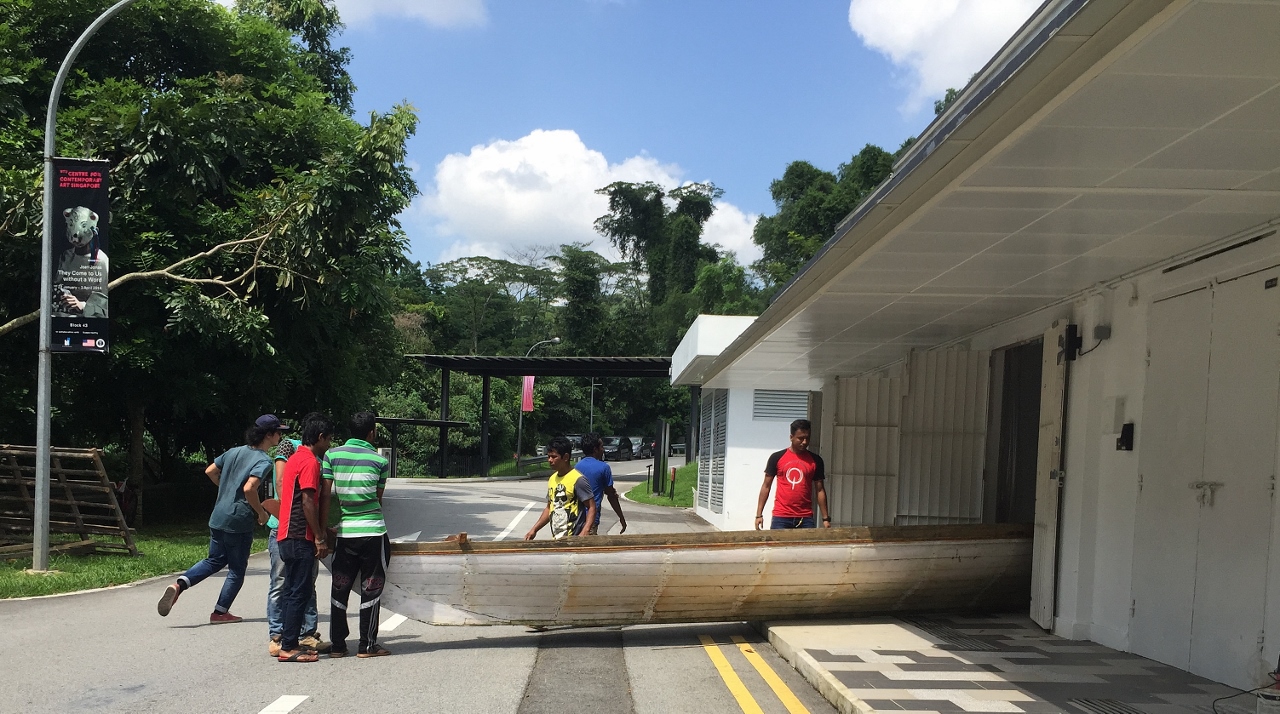
One of the kolek that was transferred from the island of Keban to Dennis Tan’s studio at Gillman Barracks. (Photo: NTU CCA)
It proved to be difficult, admitted Tan. But for him, it’s not just about the act of literally building the boat but trying to understand the entire culture that surrounds these boats.
“It’s an endeavor to recover a traditional, old craft and not just (treat it like) a pseudo-archeological discovery,” he said.
At the moment, he has put the project on hold, because of lack of funding and space. But in the meantime, the two original koleks he found in Keban are now on display: One is at Gillman Barracks while the other is at the NUS Museum, together with Tan’s unfinished kolek.
As for Lim, his video documentation continues. And it has come to the point where it’s not just about art anymore.
“Watching kolek racing excites me on a visceral level. It looks more exciting than normal sailing, actually,” he laughed. “There’s something that I can’t quite describe that is there through experiencing it.”
The former national sailor also has a far-fetched dream. “In some ways, what I hope would happen is for local sailors to build a boat in Singapore and then form a team of local people to go and take part in the races. We could have kolek racing instead of F1 right?”
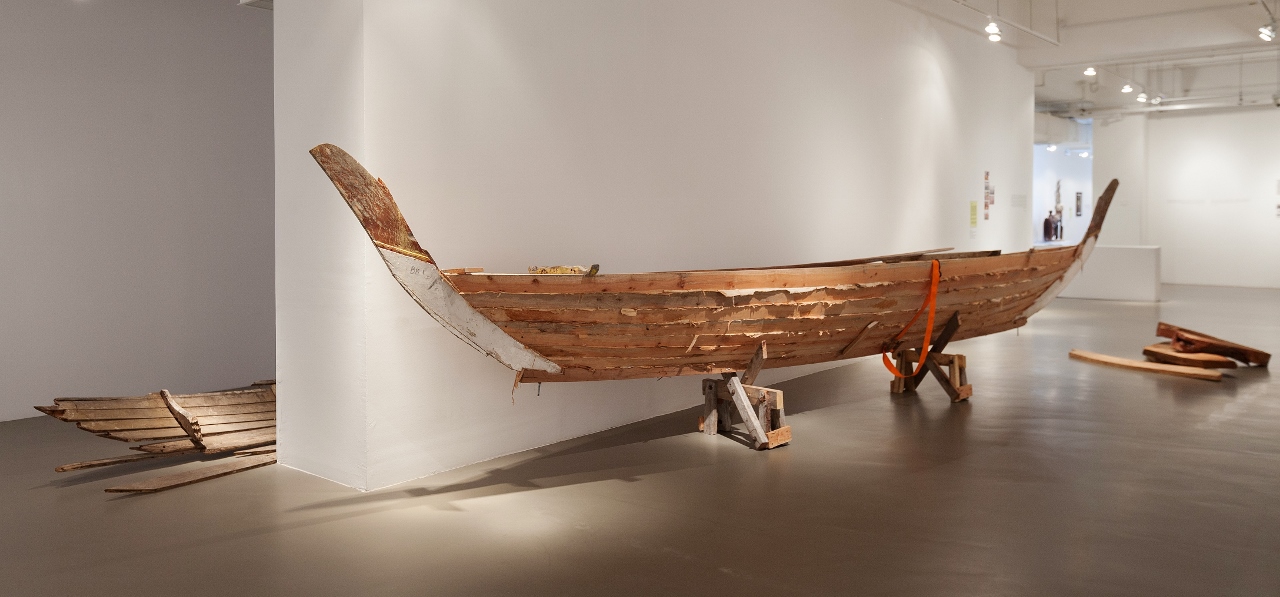
Dennis Tan’s unfinished kolek (right) and the remains of one of the old kolek from Keban are on display at the NUS Museum’s latest show “There are too many episodes of people coming here…” (Photo: Geraldine Kang)
